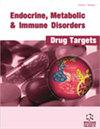SARS-Cov-2 Infection: A New Risk Factor for Pituitary Apoplexy?
IF 2
4区 医学
Q3 ENDOCRINOLOGY & METABOLISM
Endocrine, metabolic & immune disorders drug targets
Pub Date : 2024-04-27
DOI:10.2174/0118715303315494240419060719
引用次数: 0
Abstract
Background: Pituitary apoplexy (PA) can arise from haemorrhage or ischaemia of pituitary tissue and is characterized by abrupt onset of headache, visual impairment and hypopituitarism. COVID-19 may be associated with various degrees of vascular complications and, recently, its relationship with PA has been suggested. <P></P> Cases Presentation <P></P> Case 1: A 64-year-old male with type 2 diabetes, hypertension and coronary heart disease was admitted to the ER, after several days of asymptomatic COVID-19 infection, with symptoms of PA of a known non-functioning pituitary macroadenoma. The hormonal panel was consistent with anterior panhypopituitarism and the sellar MRI showed haemorrhagic changes of macroadenoma tissue. Transsphenoidal resection of the pituitary lesion was carried out seven days after admission. Although a volumetric reduction of the lesion was apparent during follow-up, some degree of visual symptoms endured. <P></P> Case 2: An 18-year-old, otherwise healthy, female presented to the ER with symptoms of PA of a recently-diagnosed non-functioning pituitary macroadenoma, after ten days of asymptomatic COVID-19 infection. Central hypocortisolism and hypothyroidism were diagnosed and, after six days, the lesion was surgically resected. At two months follow-up, clinical symptoms had completely resolved, and the hormonal panel was normal. <P></P> Conclusion: Alongside known risk factors (hypertension, anticoagulation, pregnancy, surgery, etc.), COVID-19 infection might represent an emerging predisposing factor for PA onset. The two cases hereby presented are both significant: the first confirms the role of “classic” vascular predisposing factors for PA, while the second demonstrates that PA might arise also in young patients without known risk factors.SARS-Cov-2 感染:垂体性脑瘫的新风险因素?
背景:垂体性脑瘫(PA)可由垂体组织出血或缺血引起,其特点是突然出现头痛、视力障碍和垂体功能减退。COVID-19 可能与不同程度的血管并发症有关,最近有人提出它与 PA 的关系。 <P></P>病例介绍 <P></P>病例 1:一名 64 岁男性,患有 2 型糖尿病、高血压和冠心病,在感染 COVID-19 多天后,因已知无功能垂体大腺瘤的 PA 症状而被送入急诊室。激素检测结果与前垂体功能减退症一致,蝶鞍磁共振成像显示大腺瘤组织有出血性改变。入院七天后,对垂体病灶进行了经蝶窦切除术。病例 2:一名 18 岁、身体健康的女性因最近确诊的无功能垂体大腺瘤 PA 症状来到急诊室就诊,此前她已感染 COVID-19 十天,无症状。确诊为中枢性皮质醇减少症和甲状腺功能减退症,六天后,手术切除了病灶。随访两个月后,临床症状完全消失,激素检测结果正常:除了已知的危险因素(高血压、抗凝、妊娠、手术等),COVID-19 感染可能是 PA 发病的一个新的易感因素。本文介绍的两个病例都具有重要意义:第一个病例证实了 "经典 "血管诱发因素对 PA 的作用,而第二个病例则表明 PA 也可能发生在没有已知危险因素的年轻患者身上。
本文章由计算机程序翻译,如有差异,请以英文原文为准。
求助全文
约1分钟内获得全文
求助全文
来源期刊

Endocrine, metabolic & immune disorders drug targets
ENDOCRINOLOGY & METABOLISMIMMUNOLOGY-IMMUNOLOGY
CiteScore
4.60
自引率
5.30%
发文量
217
期刊介绍:
Aims & Scope
This journal is devoted to timely reviews and original articles of experimental and clinical studies in the field of endocrine, metabolic, and immune disorders. Specific emphasis is placed on humoral and cellular targets for natural, synthetic, and genetically engineered drugs that enhance or impair endocrine, metabolic, and immune parameters and functions. Moreover, the topics related to effects of food components and/or nutraceuticals on the endocrine-metabolic-immune axis and on microbioma composition are welcome.
 求助内容:
求助内容: 应助结果提醒方式:
应助结果提醒方式:


